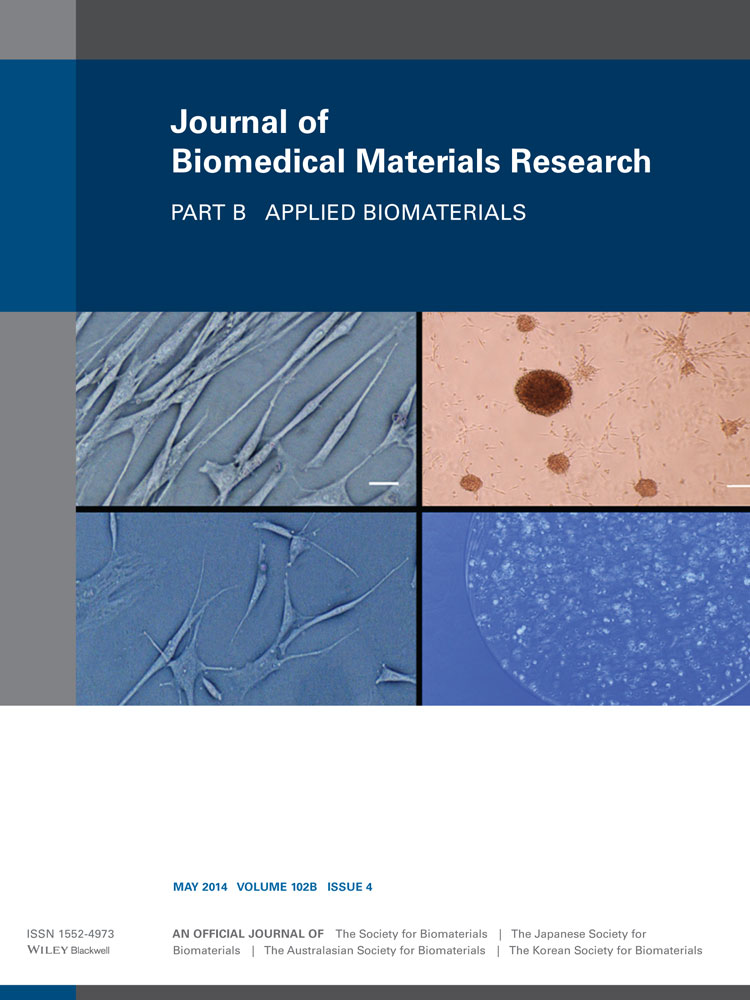The in vivo evaluation of tissue-based biomaterials in a rat full-thickness abdominal wall defect model
Abstract
Hernias are defects in which an anatomical fascia is breached resulting in ectopic positioning of an organ into an orifice which routinely does not contain it. Intervention often involves repositioning translocated organs and repair of damaged fascia using exogenous grafts. Despite hernia prevalence, repairs can still fail due to postoperative complications, such as chronic pain and decreased mobility. This study compared repair capacities and characterized the foreign body response elicited by a number of hernia repair grafts to deduce their bulk inflammatory properties while also concluding the point in their fabrication when these are inferred. Materials derived from human dermis (Alloderm®), porcine dermis (Permacol™, patch A, patch D and Strattice®), porcine small-intestinal submucosa (Surgisis™) and a synthetic (multifilament Surgipro™) were implanted into a rat full-thickness abdominal wall excision model, incubated for up to 2 years and characterized histopathologically. Surgisis™ resorbed the fastest of the materials tested (1–3 months) resulting in a mechanically stable parietal peritoneum. Decellularization using sodium dodecyl sulfate (patch A) stimulated a large early inflammatory response which ultimately may have contributed to increased resorption of porcine dermal matrix however the remaining materials typically persisted throughout the 2-year incubation. Cross-linking porcine dermis using 1,6-hexamethylene disocyanate (vs. an identical noncross-linked counterpart) showed no difference in cell recruitment or material integration over 2 years. Typically Strattice® and Alloderm® recruited larger early populations of cells than Permacol™; however, over extended periods of time in vivo this response normalized. © 2013 Wiley Periodicals, Inc. J Biomed Mater Res Part B: Appl Biomater, 102B: 709–720, 2014.




